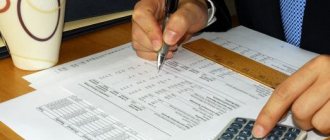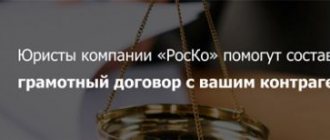Differences based on reasons for appointment
The camera is carried out upon submission of reports to the inspection.
The basis for an on-site tax audit may be:
- unprofitable accounting and tax reporting;
- high tax deductions;
- low wages of employees;
- failure to provide explanations on the requirements set by the inspection;
- decision to initiate voluntary liquidation, etc.
For your information! The risk of assigning a GNP at the beginning of the liquidation procedure of a legal entity increases greatly. Tax officials have the right to check the company, regardless of when similar events were last carried out. Read more in the material on the website of the Lawyers Association.
By what criteria do KNP and GNP differ?
The main differences between desk and field tax audits, in addition to the timing and location of control activities, are the scope of powers granted to employees of the Federal Tax Service:
During the internal inspection, inspectors have the opportunity to use alternative sources and methods of obtaining information. For example, data on the property of an enterprise can be confirmed by the results of an inventory and inspection of premises and documents.
The list of information that can be requested from the KNI is specified in Art. 88 Tax Code of the Russian Federation. As a general rule, only a declaration is submitted. If inconsistencies are identified, the taxpayer additionally confirms the legality of the declared deductions and benefits, the correctness of the calculations with explanations, appendices to the declaration and documents at his discretion (clauses 3, 4, 7 of Article 88 of the Tax Code of the Russian Federation).
For VNP, the following can be studied:
- tax reporting;
- constituent documents;
- contracts, licenses, orders;
- accounting registers, primary accounting documents, etc.
The list is not closed (clause 5.1 of the letter of the Federal Tax Service of the Russian Federation dated July 25, 2013 No. AS-4-2/13622).
The conduct of the VNP may be suspended while receiving responses from third parties, conducting an examination, and translating documents. The timing of the submission of the requested information and the need for additional activities and the involvement of specialists do not affect the progress of the KNI.
Below is a table comparing desk and field tax audits.
Comparison of desk and field inspections: procedure and procedure
A desk tax audit allows you to conduct a full analysis of your declaration. Compare report data with data in other reports. Check the correctness of the tax base calculation. If the inspector identifies errors or contradictions in the declaration, the taxpayer organization will be required to provide explanations or prepare an adjustment declaration. It is necessary to prepare a response to the request, attach documents to the response, or submit an updated report.
Many people believe that there can be no problems with passing a desk tax audit. But no, that's not true. Moreover, the camera room can become a harbinger of the away one.
You can read in detail about how to pass the cameral, indicating the stages and current tips, in the article on the website of the Association of Lawyers.
As for the on-site inspection, the company’s activities for three years are checked. However, there are examples that the tax office can check a period of more than three years. Verification activities are carried out on the basis of documents requested by the inspector (tax registers, primary documents, etc.). An in-depth and detailed analysis of accounting documentation is carried out.
For your information! The inspection may suspend the process of conducting a GNP in accordance with the provisions of clause 9 of Art. 89 of the Tax Code of the Russian Federation. But the period of suspension should not exceed six months.
The final stage
Upon completion of the internal inspection or desk inspection, a report is issued.
Based on the results of the cameras, an act is drawn up only if violations have been identified. The posting period is 10 days after the end of the event.
When visiting, the taxpayer is given a certificate on the last day, after which the tax authority issues a report. The period for its preparation is two months from the date of preparation of the certificate.
If a taxpayer does not agree with the report of a desk or field tax audit, he has the right to write an objection based on clause 6 of Art. 100 of the Tax Code of the Russian Federation. The period for submitting an objection is one month.
Legal regulation. What types of tax audits are provided for by the Tax Code of the Russian Federation?
Tax authorities are given the right to carry out control measures, including conducting audits.
Art. 87 of the Tax Code of the Russian Federation (hereinafter referred to as the Tax Code of the Russian Federation) allows for desk and field tax audits (hereinafter referred to as KNI and VNP) in relation to payers of taxes and fees, and tax agents. When assigning desk and field tax audits, the following are guided by:
- Ch. 14 Tax Code of the Russian Federation;
- by order of the Federal Tax Service of the Russian Federation dated May 30, 2007 No. MM-3-06/ [email protected] , approved. The concept of a planning system for on-site tax audits and parameters for assessing the activities of a taxpayer (hereinafter referred to as the Concept);
- letter of the Federal Tax Service of the Russian Federation dated July 25, 2013 No. AS-4-2/13622, giving general recommendations on the procedure for conducting GNP;
- letter of the Federal Tax Service of the Russian Federation dated July 16, 2013 No. AS-4-2/12705, explaining the KNI procedure;
- letter of the Federal Tax Service of the Russian Federation dated July 17, 2013 No. AS-4-2/12837, concerning the implementation of control measures during tax audits;
- Order of the Federal Tax Service of the Russian Federation dated 05/08/2015 No. ММВ-7-2/ [email protected] , which established the forms of documents used in the process of carrying out control measures, and other regulations.
Tax audits will not be canceled due to quarantine measures and other consequences of the COVID-19 pandemic. However, new on-site inspections will not be scheduled temporarily until 06/01/2020. The pandemic did not affect desk inspections. A ready-made solution to the questions of which inspections will be suspended, whether it will be possible to execute the order later or submit documents can be found in the ConsultantPlus system. We offer to open access to the system temporarily (link to free 2-day access) or permanently (price list).
How can you protect yourself when scheduling inspections?
- There must be order in financial and economic documents. The documents between you and your counterparties must be identical.
- It makes sense to warn counterparties so that they are also prepared.
- Before the inspection, it is necessary to brief employees.
Tax audits are an unpleasant and dangerous business. From year to year, tax audits are only getting tougher. To keep the risks minimal, you need to be prepared, as they say, fully armed. A reasonable solution is to engage a law firm that specializes in supporting tax audits.
Cameral view
A desk audit is characterized by the fact that the company submits documents to the tax authority, where they are checked.
Those. Representatives of the Federal Tax Service do not need to travel anywhere for this event. They analyze the tax reports provided to them and draw conclusions based on them in their place. Most often, tax returns are examined here, but other documents, such as transport documentation, may also be examined. When an inspector sees a violation, he sends the company a letter demanding that the violation be eliminated. If everything is fine with the papers and there are no complaints against them, then in this case the organization will not receive any notification.
Often, during a desk check, typos and errors in document execution are discovered.
Most often, during a desk audit, typos and errors in document execution are discovered. It happens that papers are prophesied, i.e. they were submitted to the tax authority late, which is already considered a violation. When an order is received to eliminate all deficiencies, the company must work on it and then send a corrected version of each paper to the Federal Tax Service.
For a desk audit, tax officials do not need to receive special instructions from their superiors, which must be the case during an on-site audit. Tax officials have 3 months to thoroughly check all declarations. This event is regulated by Art. 88 Tax Code of the Russian Federation.
Documents older than 3 years cannot be verified.
How is a desk audit carried out?
The specifics of conducting desk audits are regulated by the provisions of Art. 88 Tax Code of the Russian Federation. All taxpayers, depending on the applied tax regime and the types of activities performed, must generate one or another reporting form. Compliance with tax legislation requires timely submission of tax reports to the Federal Tax Service. All documents received by the inspection are subject to control by the desk inspection department.
The Federal Tax Service has three months from the date of submission of documents to carry out these activities. If violations are identified, the duration of the camera meeting may be extended.
If errors are detected in the submitted reports, the Federal Tax Service informs the taxpayer about this fact, giving him the opportunity to double-check the calculations and submit an updated tax report to the inspectorate within 5 business days.
Significant violations may become the basis for a more in-depth inspection, involving the implementation of such measures as requesting an additional package of taxpayer documents, organizing counter-inspections of counterparties, and calling possible witnesses for questioning.
If the taxpayer’s cameral was successful, he does not receive any notifications from the Federal Tax Service. However, in the event that violations were identified during control activities, inspectors are required to draw up a desk inspection report.
Difference No. 6. Who checks
Desk and on-site inspections are carried out by the Federal Tax Service, but there are nuances.
| On-site tax audit | Desk tax audit |
| The initiator of an on-site tax audit is always the Federal Tax Service. But absolutely any inspector of the Federal Tax Service of Russia can be included in the inspection team. | The police and the Investigative Committee of the Russian Federation may also be involved. Desk audits are carried out by the Federal Tax Service (employees of the relevant desk department: for profit, for VAT, etc.). |
Important!
If information comes from law enforcement agencies that the organization’s actions may contain elements of a tax crime, then the police and investigative authorities will certainly be involved in an on-site inspection of such an organization. In this case, the official initiator of the inspection will be the Federal Tax Service.
“Siloviki” are invited to participate in an on-site inspection when the inspection itself, during a pre-inspection analysis, has suspicions that the company is using tax evasion schemes, and the amount of unpaid taxes amounts to a crime under one of the “tax” articles of the Criminal Code of the Russian Federation.
Also, police officers may be involved in specific activities as part of an on-site inspection - interrogations, inspections, seizures, etc., up to the delivery of an on-site inspection report in order to ensure the safety of Federal Tax Service employees.
Difference No. 3. Venue
| On-site tax audit | Desk tax audit |
| On-site inspections are carried out by the tax office on the territory of the taxpayer (if the taxpayer cannot provide premises, then the on-site inspection is carried out on the territory of the Federal Tax Service, less often on the territory of another organization, read more about this in the publication “On-site inspection outside the office: does it make sense to accept tax officers outside the company ?). | The desk audit is carried out on the premises of the Federal Tax Service. |
Important!
As part of a desk audit, tax control activities can be carried out that allow you to come to the organization, for example, an inspection. Moreover, as part of the inspection, tax officials are given the right to conduct an inventory of the taxpayer’s property. That is, in fact, even as part of a desk tax audit, an inspector can come to the company, inspect the warehouse and count everything that is in this warehouse.
Difference No. 9. Consequences of verification
| On-site tax audit | Desk tax audit |
| Based on the results of an on-site tax audit, companies may be assessed additional taxes, as well as be required to pay penalties and fines. Besides:
| Based on the results of a desk tax audit, companies may be required to submit an updated declaration, pay additional taxes, penalties, and also pay a fine (if the declaration was submitted late). |
“Cost” of a tax audit
A tax audit is not only a test for the nervous system, but also for the company’s budget, because audit activities often result in fines and penalties. For example, in 2018, the effectiveness of each on-site inspection amounted to more than 14 million rubles.
The main trend in recent years is the selectivity of inspections, which has a positive effect on their results. Simply put, the tax office will definitely find violations and make additional assessments if it comes to you with an audit. Of course, the amount of 14 million is an average figure, and it is difficult to predict what an inspection at your enterprise will result in, but getting a general idea is quite possible. Obviously, the consequences can be more than serious.
However, not everything is so bad - it is quite possible to prevent an on-site audit, and the tax officials themselves encourage you to do this. Risk criteria will be discussed below.
Main areas of work and plans of the Federal Tax Service:
- work to improve the effectiveness of combating tax evasion;
- improving the quality of control through spot checks;
- control over the use of cash register equipment;
- increasing the efficiency of collections by bringing founders to subsidiary liability.
There is a feeling that the notorious “presumption of innocence” of the taxpayer is losing its relevance, and for tax officials, as well as for doctors, there are simply no “healthy” ones, but only “not fully examined.”
Of course, the resource of the tax inspectorate still has its limit; they simply cannot constantly check all companies and will first of all deal with the largest and most prominent enterprises, as well as those who severely violate the law. Thus, with proper accounting, you can work for many years and not experience the close attention of tax authorities.
Difference No. 5. Frequency of inspection
| On-site tax audit | Desk tax audit |
| No more than 2 on-site inspections within one calendar year. The exception is repeated inspections. | Each submitted declaration, including updated ones, is checked. |
Important!
A repeated on-site audit is carried out on the initiative of the Federal Tax Service and is aimed at monitoring the actions of the tax inspectorate, which conducted the “primary” audit. Repeated inspections are most often ordered when the management of the Federal Tax Service has suspicions of the existence of a corrupt relationship between the inspector who conducted the inspection and the organization.
Subject and period of tax audit
A desk tax audit refers to a separate declaration, and within its framework, inspectors analyze the payment of a specific tax or contribution. Accordingly, the audited period corresponds to the tax period, i.e. can last from a month to a year.
An on-site tax audit does not concern a separate report, but the calculation of mandatory payments as a whole. This can be either one or two taxes, or all mandatory payments that the company transfers.
The “spectrum” of an on-site tax audit is determined by the tax authorities themselves. But there is also a limitation on the period - the audit can cover no more than the previous three years (clause 4 of Article 89 of the Tax Code of the Russian Federation).
Difference No. 8. Presentation of results
| On-site tax audit | Desk tax audit |
| Based on the results of the on-site inspection, a certificate is drawn up, then an inspection report, on the basis of which a decision on the on-site inspection is prepared. The decision is handed over personally to the head of the company against signature or to his authorized representative. | You can only find out about the desk audit that has been carried out upon receipt of the report. But the Federal Tax Service sends it only if there are errors/violations in the declarations. That is, in case of successful completion of a desk audit, the taxpayer does not receive any “pieces of paper”. |
Important!
If we are talking about a desk audit of VAT returns where the tax is claimed for refund, then if the audit is successfully completed, the Federal Tax Service will send a decision on refund.
Difference No. 7. Tax control measures
| On-site tax audit | Desk tax audit |
As part of an on-site audit, so-called additional tax control measures may be carried out:
| As part of a desk audit, the Federal Tax Service only checks tax returns submitted by the company. Tax officials can request additional documents within the framework of the “camera chamber” only in cases strictly stipulated by the Tax Code (detection of discrepancies/errors; submission of an updated declaration with a reduced amount of tax payable; in case of VAT refund; in the presence of benefits - to confirm them). |
Important!
Even within the framework of a desk tax audit, tax officials can conduct inspections, for example, during a desk audit of profits.
Let's imagine a situation: a company purchased mega-expensive equipment. She charged depreciation on it for six months, and then suddenly wrote it off as an expense, citing the fact that the equipment had broken down and was lying “dead weight” in the warehouse. In this case, the inspection will definitely want to visit the warehouse for inspection, and the results of its visit will document the inspection protocol.






